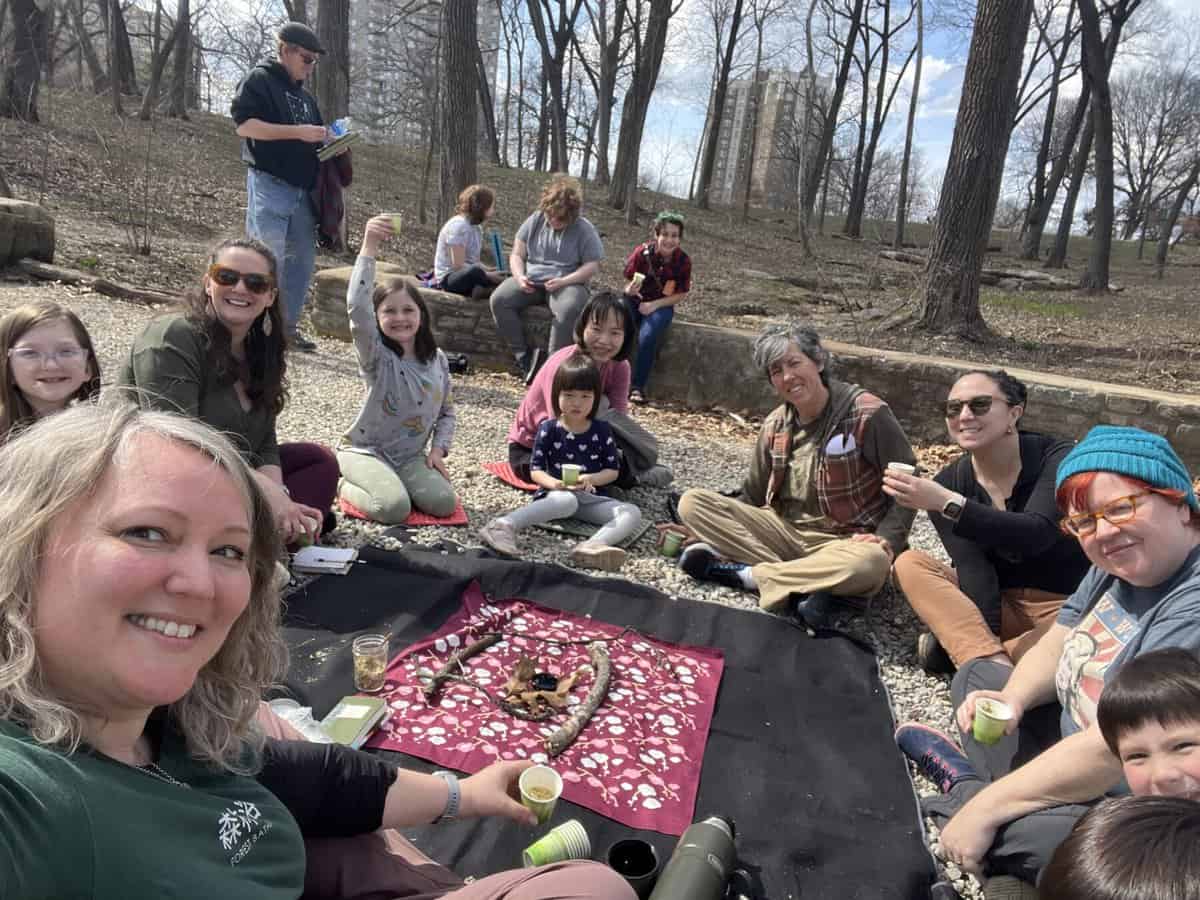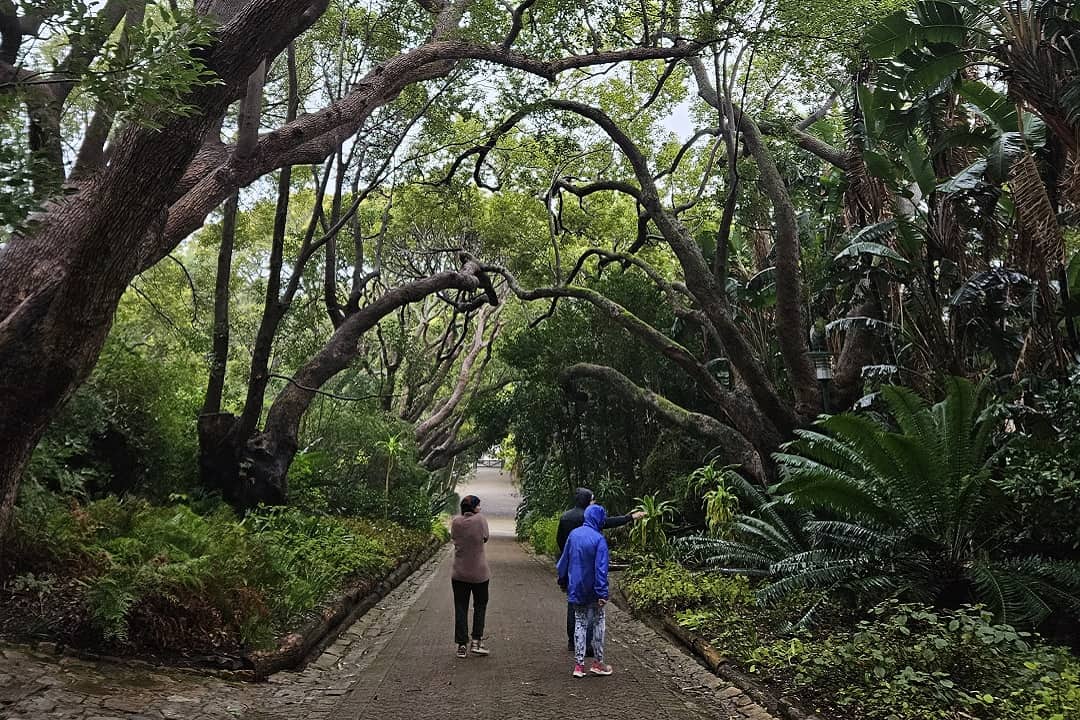When people first hear about forest bathing, they might assume water is involved. But the name actually refers to immersion in the natural environment. Forest bathers take in their surroundings by using all their senses, soaking in the smells, textures, tastes, and sights of the forest.
While Japan popularized this practice in modern times (see bottom of page), the idea that spending time outside is good for our health is not new. Over the course of human history, our bodies adapted to living in nature, and even though we now spend much of our life indoors and tethered to devices, our bodies still need to feel a connection to the living world.
According to Jess Thenhaus, a St. Louis-based certified forest and nature therapy guide through the Association of Nature and Forest Therapy, “immersion in green spaces has been found to reduce stress levels and alleviate symptoms of anxiety and depression. The calming sounds of nature combined with fresh air create a serene atmosphere that can help improve focus, enhance creativity, and provide a much-needed break from technology-induced distractions.”
Research has shown that spending time in a forest environment can lead to reductions in blood pressure and certain stress hormones. Trees release compounds known as phytoncides into the forest air, and studies have found that inhaling these compounds reduces concentrations of stress hormones in men and women and enhances the activity of white-blood cells.
Thenhaus states there is no right or wrong way to practice forest bathing, but focusing on the five senses will allow you to fully experience the power of nature.
Listen to the birds singing, the insects chirping, and the breeze rustling the tree leaves. Observe the vast palette of the leaves and vegetation and notice how the colors change as the sunlight filters through the branches. Smell the fragrance of the forest and breathe in the aromatics of the phytoncides. Rub some leaves between your fingers to release the scent. Place your hands on the trunk of a tree. Feel the ground beneath you and notice how it supports you. Purse your lips and breathe in deeply, tasting the freshness of the air. Similar to mindful meditation, focus on the present moment and let go of thoughts, worries, and the busyness of life.
Forest bathing is suitable for people of all ages and abilities, but Thenhaus says it can look different with children who “typically already have an inclination to observe and explore when in nature…so it’s more like playing and usually a little more high energy.”

Jess Thenhaus (bottom left) is a St. Louis-based forest and nature therapy guide.
The ideal location for forest bathing is simply one that brings you close to nature. A quiet, clear portion of the woods is great for centering yourself in the present, but if you live in an urban area, you can create the experience by finding a park and taking time to engage all your senses under a set of trees. If you have some plants at home, you can set up a mat under them and focus your attention on the leaves. Thenhaus recommends Forest Park, Tower Grove Park, smaller local parks, and even the Missouri Botanical Garden for a forest bathing experience. If you want to get away from the city, she suggests spending time in the wooded areas at Castlewood State Park, Babler State Park, Lewis & Clark Trail in St. Charles, and The Nature Institute across the river in Godfrey, Illinois.
If you want to turn your forest bathing experience into a day trip or weekend getaway, Kathie Brennan of the Ozark Trail Association recommends multiple sections along the Ozark Trail, including the Eleven Point, Upper Current, Current River, Blair, and Karkahgne. According to Brennan, the spring-fed streams, ridgetop vistas, and river bluff glades provide multiple options for full sensory immersion in nature.
While the terms may often be interchanged, Thenhaus differentiates forest bathing and forest therapy. “In forest bathing, people spend time in forested areas to enhance health, wellness, and happiness,” she said. “In forest therapy, people are guided through a clearly defined sequence of invitations to slow down, allow the senses to open, and experience the environment to deepen the reciprocal relationship between participants and the forest.”
For those interested in guided experiences, Thenhaus offers forest bathing and nature therapy walks a few times a month from September to June, and there are several other certified guides in the area that host events as well. Check out urbanforestherapy.com and forestbathingfinder.com for more information.
What’s in a Name?
Forest bathing began in Japan, developing mainstream appeal around the 1980s. Nature therapy became a necessary outlet after the burnout that followed the tech boom of that decade, particularly as it sparked record levels of depression in Japan. People returned to nature to find peace and to counter the effects of life’s challenges. It became so popular that in the early 1990s the Japanese Ministry of Agriculture, Forestry, and Fisheries coined this practice Shinrin-yoku, which translates roughly as forest bathing.
Author: Missy Phegley is a regular contributor to Terrain Magazine.


Leave A Comment